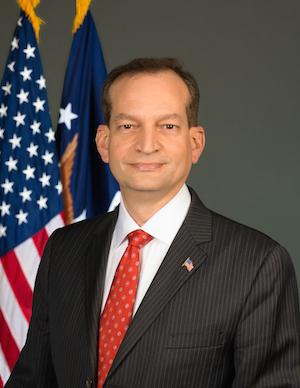Labor Secretary Acosta Supports Workers with Association Retirement Plans

On October 22, 2018, the U.S. Department of Labor under the leadership of U.S. Secretary of Labor Alex Acosta released a Notice of Proposed Rulemaking on Association Retirement Plans (ARPs). The proposed rule follows through on President Donald Trump’s August 31st Executive Order 13847, “Strengthening Retirement Security in America.”
The Executive Order asked Secretary Acosta to:
“(1) clarify and expand the circumstances under which U.S. employers, especially small and mid-sized businesses, may sponsor or adopt a MEP as a workplace retirement savings option for their employees, subject to appropriate safeguards; and (2) increase retirement security for part-time workers, sole proprietors, working owners, and other entrepreneurial workers with non-traditional employer-employee relationships by expanding their access to workplace retirement savings plans, including MEPs.”
The purpose of the Executive Order and the proposed rule is to allow more American workers to have workplace retirement plans. 23 percent of private sector, full time workers do not have retirement accounts through their employment, and 34 percent of full time and part time workers don’t have retirement benefits according to the Bureau of Labor Statistics.
Most of these employees work for small businesses, and these small businesses cannot afford the retirement plans. Federal government rules and regulations make retirement plans too expensive. In fact, the Pew Charitable Trust found that 71 percent of small and medium-sized businesses without retirement plans couldn’t offer these plans due to their high costs. This proposed rule allows for the pooling of plan participants, which lowers the costs of these plans for small businesses.
In addition, many Americans have not saved for retirement. The Employee Benefit Research Institute estimates that the retirement savings deficits will be over $4 trillion with 43 percent of Americans aged 35 to 64 unable to meet their average expenses in retirement. The ARP rule will encourage more Americans to prepare for retirement.
The proposed rule accomplishes its goals by clarifying the definition of “employer” to include employer groups or associations and professional employer organizations (PEO) if the groups meet certain criteria, i.e. a commonality of interests. For example, the employers have to be in the same “trade, industry, line of business, or profession” or have a “principal place of business within a region.”
This definition would allow more employees to participate in ERISA-protected retirement plans. The benefits of these plans, rather than IRAs, include:
“(1) higher contribution limits; (2) generally lower investment management fees as the size of plan assets increases; (3) a well - established uniform regulatory structure with important consumer protections, including fiduciary obligations, recordkeeping and disclosure requirements, legal accountability provisions, and spousal protections; (4) automatic enrollment; and (5) stronger protections from creditors.”
Americans for Tax Reform and the Center for Worker Freedom strongly support the proposed rule because the rule would increase access to workplace retirement plans for many employees, especially for workers at small businesses, the self-employed, and gig workers. In addition, the rule would level the playing field between small and large businesses and increase tax equity among workers because more workers would have access to the tax savings from retirement plans.





